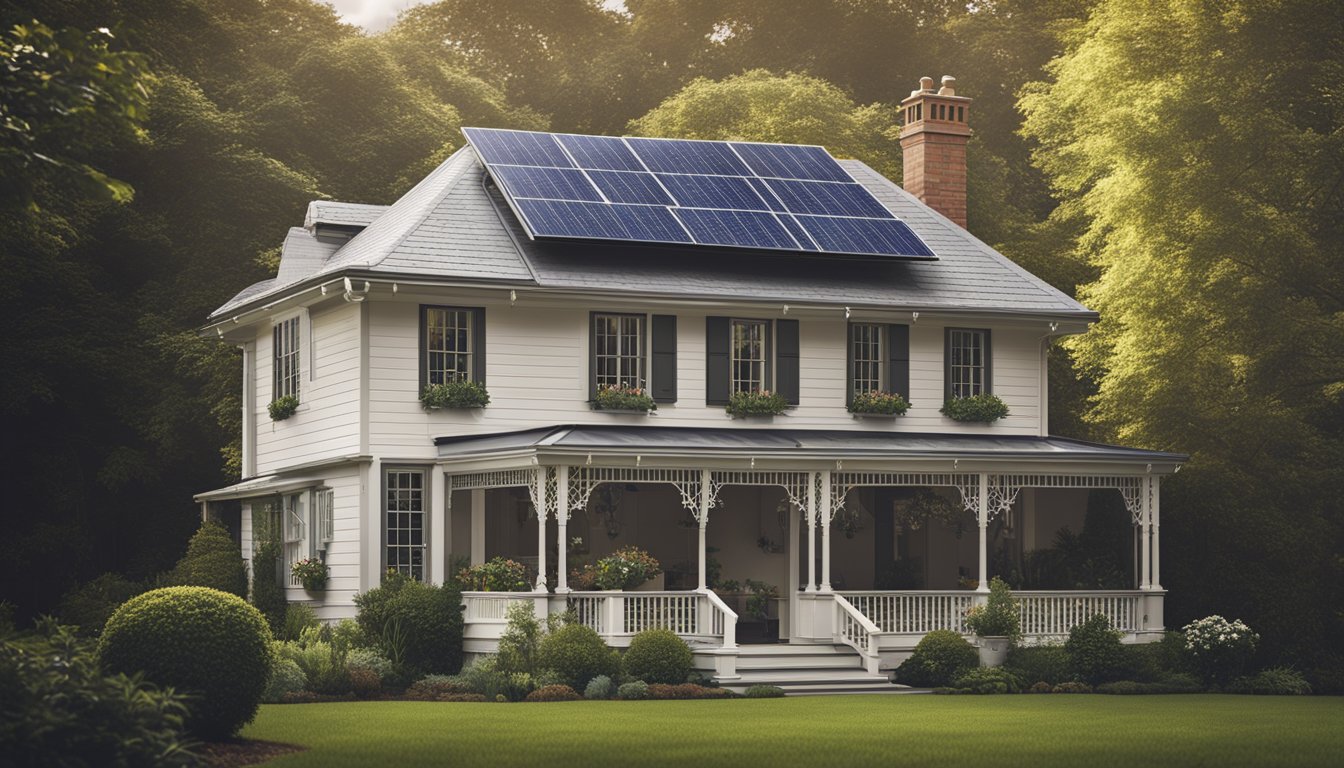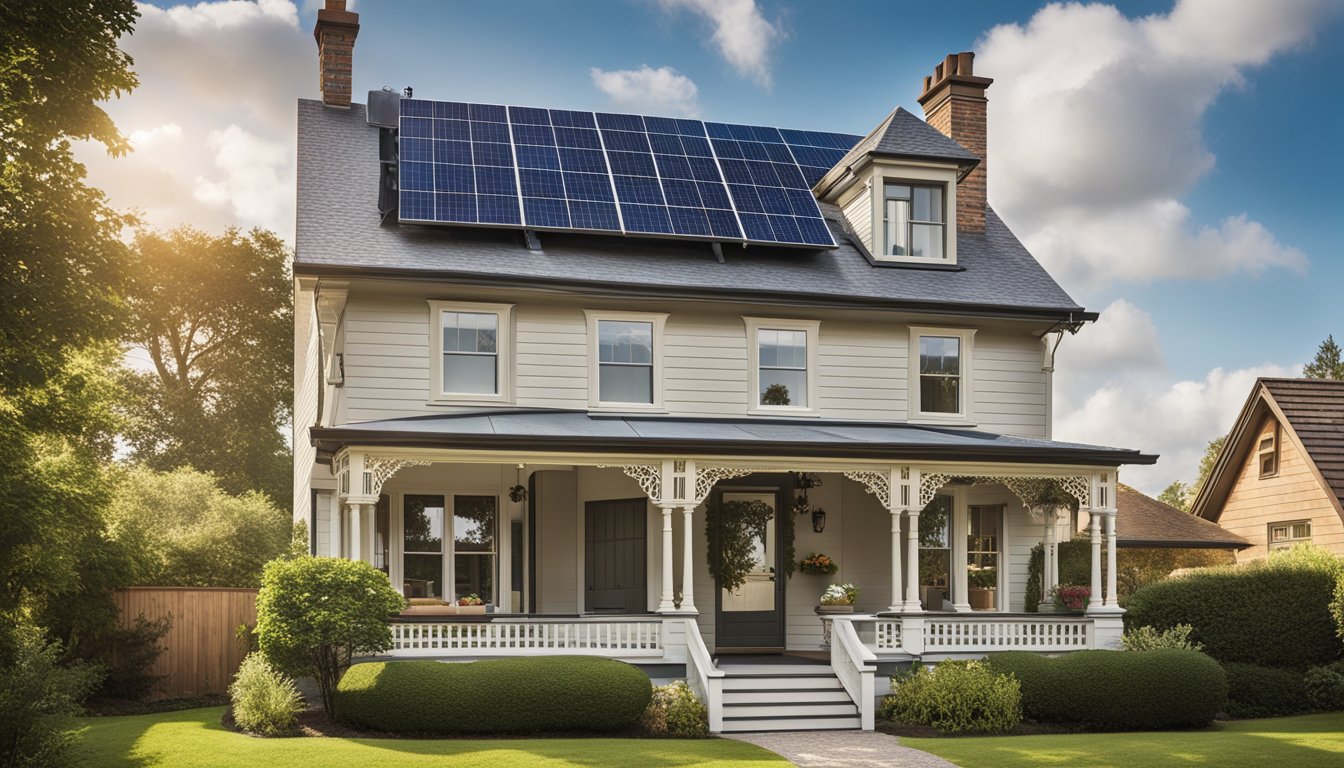Late updated: 03 Nov 2024 09:11
Written by: Daniel Harper
Energy-Saving Tips For Renovating Victorian Homes: Boost Efficiency and Preserve Charm
Breathing new life into a Victorian home while enhancing its energy efficiency is a rewarding challenge. These timeless structures often lack modern energy-saving features, but upgrading them with eco-friendly improvements can dramatically reduce carbon footprints. As we explore various strategies for renovation, we'll focus on approaches that preserve the architectural beauty unique to these historic homes.

Renovation plans must consider the inherent traits of Victorian architecture, such as thick walls and large windows, which can be leveraged for energy savings. By updating insulation, windows, and HVAC systems, Victorian homes can achieve greater efficiency without compromising aesthetic integrity. Our aim is to provide practical, sustainable solutions that suit both the style and needs of older properties, making them more energy efficient and environmentally friendly.
The journey involves evaluating your home's current energy profile and identifying areas that need upgrading. Simple actions, like installing energy-efficient systems and improving insulation, can lead to significant reductions in energy consumption and costs. We will guide you through steps and insights to help reduce consumption and make your home friendlier to the planet.
Key Takeaways
- Victorian homes can be renovated for better energy efficiency.
- Upgrading insulation and systems lowers carbon footprints.
- Assess your home's energy use to identify improvements.
Assessing Your Victorian Home's Energy Profile
Maximising energy efficiency in a Victorian home involves both recognising the historical value and conducting a comprehensive energy audit. These steps can help preserve the character while improving comfort and reducing costs.
Understanding Historical Value
Victorian homes hold a significant place in architectural history with their distinctive features. When assessing energy efficiency, it's crucial to respect these characteristics, especially in listed buildings or conservation areas. Historic England provides guidance on preserving these homes while improving energy performance. Maintaining original elements such as windows, doors, and decorative details can contribute to the overall charm but may also impact energy efficiency levels.
The challenge is to find the right balance. For instance, secondary glazing may be less intrusive than replacing original sash windows, allowing us to maintain the aesthetics and improve insulation.
Energy Audit Essentials
Conducting an energy audit is essential to understand our home's current efficiency. This involves examining insulation, heating, and ventilation systems. Victorian homes often have solid walls, which can limit insulation options. However, adding insulation in areas such as lofts can drastically reduce heat loss.
Professional energy audits can pinpoint areas of improvement, like air leaks or inefficient appliances. Key focus areas should include attic insulation, air sealing, and upgrading HVAC systems. Implementing energy-efficient upgrades can significantly enhance comfort and reduce energy bills without compromising the building's historical integrity. Using a professional energy assessor can ensure we adhere to regulations while optimising energy use.
Implementing Energy-Saving Measures

When renovating Victorian homes, we focus on methods to enhance energy efficiency without sacrificing the character of these historic structures. From improving insulation to integrating renewable energy sources, each strategy aims to reduce carbon emissions and energy expenses.
Insulating with Integrity
Insulation is crucial in any energy-saving plan, particularly in older homes with features like stained glass windows. Our approach ensures thermal comfort while maintaining original details. Loft insulation and external wall insulation can drastically cut heat loss. It's vital to choose materials that respect the building's historic fabric. Pay particular attention to reducing air leakage by properly sealing gaps without affecting ventilation, preserving the aesthetic and structure of the property.
Retrofitting for Renewables
Integrating renewable energy technologies like air source heat pumps is an effective strategy to push older homes towards net zero targets. These pumps not only provide low-carbon heating but also help in reducing energy bills significantly. Planning permission might be a consideration, especially in conservation areas, so always check local regulations. Adopting renewable solutions allows us to modernise energy systems while keeping the charm of Victorian architecture.
Draught Proofing and Double Glazing
One of the simplest yet highly effective ways to conserve energy is through draught proofing. Sealing gaps around doors, windows, and flooring can make a noticeable difference. Installing double glazing is another smart move, improving thermal retention without altering original glass features. Although there might be constraints due to heritage guidelines, secondary glazing can be a viable solution, offering the thermal benefits while maintaining the visual integrity.
Heating Systems and Low Carbon Solutions
Revamping heating systems to adopt low carbon solutions is pivotal. Heat pumps are excellent for cooling and heating, catering to year-round climate needs without excessive carbon emissions. Consider underfloor heating which distributes warmth evenly and is efficient for the vast rooms typical of Victorian homes. Each upgrade contributes to substantial energy cost savings, making the home environmentally sustainable and economically viable.
Adopting these measures not only respects the heritage value but also meets the pressing need for energy efficiency.
Frequently Asked Questions

Insulating Victorian homes, upgrading heating systems, and integrating modern features like double glazing or renewable energy can enhance energy efficiency while preserving the architectural charm. Draught-proofing and choosing suitable lighting solutions also play a vital role in making these period properties more sustainable.
What are the best methods for insulating Victorian-era homes?
When insulating Victorian homes, it's vital to maintain the historical integrity. Internal wall insulation is often preferred to preserve the exterior. We can add insulation to floors and attics to improve efficiency. Use breathable materials to prevent moisture build-up, which can harm older structures.
How can one upgrade the heating system in a period property for improved energy efficiency?
Updating heating in Victorian homes involves careful consideration. Installing a high-efficiency condenser boiler can significantly reduce energy usage. Consider underfloor heating, which distributes warmth evenly and is less intrusive to period aesthetics. Additionally, smart thermostats help optimise heating schedules, offering better control.
What types of double glazing are suitable for conservation areas?
In conservation areas, choosing unobtrusive double glazing is crucial. Slim-profile double glazing, which fits into existing timber frames, is often recommended. This approach maintains the external appearance while improving energy efficiency. Secondary glazing is another good option, adding an internal layer without altering the original windows.
Can you recommend energy-efficient lighting solutions for historical homes?
LED lighting is an excellent choice for energy efficiency in period homes. It's possible to find LED bulbs designed to resemble traditional filament styles. Ensure fittings are in keeping with the home's aesthetics. Using dimmer switches can also help to save energy and create ambient settings.
What renewable energy options are compatible with Victorian house renovations?
Victorian homes can benefit from renewable technologies like solar panels or ground source heat pumps. Roof-mounted solar tiles, designed to mimic traditional roofing, are a discreet option. A ground source heat pump, which uses earth's natural heat, is fitting for properties with sufficient surrounding land.
How should draught-proofing be approached in a Victorian home while preserving its character?
Effective draught-proofing respects the original design features. We can use brush or foam strips around doors and windows. Chimney balloons can be installed to block unused fireplaces without aesthetic compromise. These measures can greatly reduce heat loss while maintaining the building's historic character.
